Note: This text was created with the help of AI.



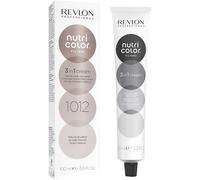

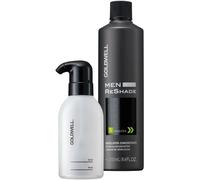








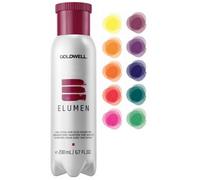
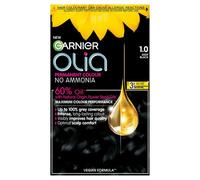
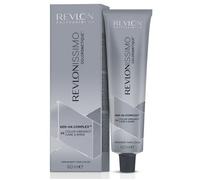


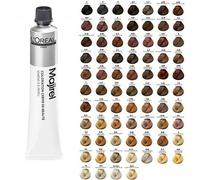



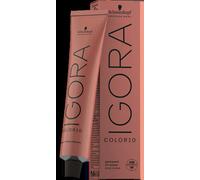
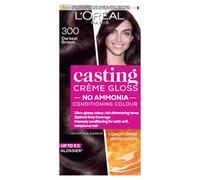
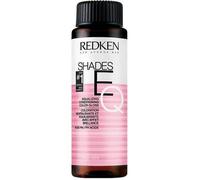




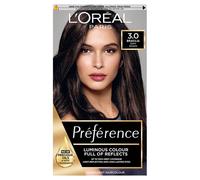









- 1
- 2
- 3
- 4
- 5
- next page
Exciting Offers for Hair Colouring
All hair colors that differ greatly from blonde, red, black and brown are not considered natural colors that nature intended for humans. However, if you want to dye your hair, you have an almost unlimited choice of colors. The colour palette ranges from mahogany and auburn to copper blonde and classic grey, leaving no wish unfulfilled.
Professional hair colors are often marked with numbers or a combination of numbers and letters. The following applies here:
| Number/letter | Criterion | Explanation |
| Number before the slash (or comma or period) | color depth | The higher the number, the lighter the tone (1/ = black, 12/ = platinum blonde) |
| First number after the slash | color direction | Represents the main tone or main color reflex. Also refers to whether the resulting color has a warm or cool hue. |
| Second number after the slash | gloss | Determines the secondary tone or the secondary colour reflex, i.e. the reflections of the colour. This is less visible and usually corresponds to the main tone. |
The type of product you choose depends on your desired target hair color. There is usually a distinction between tinting, intensive tinting and permanent colouring.
We recommend a tint (durability level 1) if you want to refresh your hair colour and give it more shine. The color does not penetrate into the hair structure, but lays purely externally on your hair, making a tint the gentlest technique. However, you can't change your hair greatly or lighten it by tinting. Also, tints do not cover gray hair. On the positive side, there is no annoying build-up, as the tint washes out after about eight to ten washes.
In contrast to normal tinting, intensive tinting (durability level 2) contains chemical ingredients. This makes it more durable and lasts for about 28 washes. With an intensive tint, your hair is artificially pigmented, so you can even lighten your hair by one shade. However, if you are a brunette and want to go blonde, you will need a bleach or permanent hair colour.
Permanent hair colour, also called colouration (durability level 3), is suitable for extreme colour changes or to cover white or grey hair. The colour penetrates deep into the hair and cannot be washed out as with tints, but remains for a longer period of time.
You can find various websites online where you can get colour advice. Hair specialists will help you find your perfect hair colour depending on your personality, your preferences, current hair colour trends, the season and other aspects.
The product and the manufacturer are crucial, as the amount of colour you get in a pack can vary. It also depends on how thick your hair is. With very full hair you definitely need more colour than with thinning hair. It also depends on the consistency of the colour. You can often only find out how well it spreads by trying it out.
While the exact process of mixing depends on the product, there are general instructions you should follow:
| Type of paint | Mixing instruction |
| Semi-permanent colors |
|
| Permanent colors |
|
| Vegetable colours (henna etc.) |
|
Oxidative colors are mixed with hydrogen peroxide. Usually you use equal parts of peroxide and colouring cream. You should mix the chemicals in a non-metallic bowl, as metals can react unfavourably with the hydrogen peroxide. It is best to mix the components with a plastic paint brush. When you mix hydrogen peroxide and an alkali (usually ammonia), an oxidation process begins immediately. This process has a limited reaction time, so you should apply the mixed paints quickly.
That depends on various criteria. It depends mainly on the condition of your hair, the product, the application and care. Some products last several weeks in your hair, others even for months. You decide when it's time for a new color application. With these tricks your hair colour will last longer:
- Don't shampoo until 24 hours after coloring.
- Wash less.
- Use the right shampoo (colour shampoo).
- Only shampoo the roots (the tips are washed when rinsing).
- Intensify the color with Color Conditioner.
- Seal the colour with conditioner.
- Use heat protection when styling (heat can bleach your hair).
- Use sunscreen spray on your hair (UV rays can fade it).
- Either grow out dyed areas or over-dye them. Renew your color only after some time, it can fade and look dull in the meantime. You'll know when it's time for a new splash of colour.
You find all the mentioned products (heat protection, conditioner, colour shampoo, etc.) in our categories “Hair styling” and “Hair products”.
With many permanent hair dyes, there is usually no risk of serious harm, since especially products from renowned manufacturers have to pass elaborate approval procedures.
However, hair dyes are not entirely harmless. A large number of them contain chemicals, some of which can trigger allergic reactions up to and including anaphylactic shock. Among the substances that particularly often trigger allergies are:
- Toluene-2,5-diamine sulfates
- paraphenylenediamine (PPD)
- Resorcinol
- Ammonia, which is used in many hair dyes to dissolve the protective cuticle layer of the hair so that the color pigments can penetrate better, also makes the scalp more permeable to harmful substances.
Generally speaking, the less contact the hair dye has with the skin, the lower the risk of allergies. Therefore, you should always wear gloves when self-dyeing and give your hair a break so that it can regenerate.
Yes, you can find some natural hair dyes without chemicals on the market. The most commonly used plant dye is henna. Henna has been used for thousands of years to color skin and hair.
Due to modern product development, vegetable dyes are now available for blonde, red, brown and black, which are getting better at covering gray hair. However, the application of vegetable hair dyes is much more involved than mixing a chemical hair dye.
Caution: Although products advertise with terms such as "Henna", "Organic", "Natural" or "Bio", some non-certified products still often contain questionable or even banned substances, even if the product name suggests otherwise.
To remove color from your hair faster, a hair scrub or oil treatment will help. You can make a natural hair scrub from coffee powder, sugar or baking soda. Mix equal parts of the ingredients with water to make a paste and then spread it through damp hair.
If hair colour gets on your hands or face, you can remove it with baking soda. To do this, mix two teaspoons each of baking soda and a mild dishwashing detergent with a little lemon juice, wet a washcloth well and dip it into the paste. Rub the mixture onto the discoloured skin in a circular motion, slowly scrubbing the stain away. Finally, rinse with lukewarm water.
If the stain is not too stubborn, you can also try using liquid dishwashing detergent alone as a hair colour remover. In general, remove hair color from your skin as soon as possible, because the longer you wait, the harder it is to remove. In the end, take good care of your skin with, for example, a mild toner and a soothing cream.
Exciting Offers for Hair Colouring
Looking for a fresh new look? At pricehunter.co.uk, you'll find an array of hair colouring products that cater to every need, style, and budget. From vibrant shades to natural tones, the options are endless. This guide will help you navigate the essentials of hair colouring, making it easier for you to find exactly what you’re looking for.Types of Hair Colouring Products
Before diving into the world of hair colouring, it's important to understand the different types available. Each type serves a specific purpose and suits various preferences.- Koleston 8.0 - A permanent dye that provides long-lasting colour.
- Temporary Colour - Great for a short-term change, this washes out after a few shampoos.
- Semi-Permanent Colour - Offers a softer change that lasts longer than temporary options but is not as permanent as traditional dyes.
- Highlights and Balayage - Techniques that add dimension and depth to your hair without fully changing your base colour.
- Root Touch-Up Kits - Perfect for maintaining your look between salon visits.
Popular Hair Colouring Brands
Choosing a reputable brand can significantly impact your hair colouring experience. Brands known for quality often come with innovative formulas and a wide shade selection.- Wella Hair Color Koleston - Renowned for vibrant, long-lasting colours.
- L’Oreal - Offers a variety of shades and types, including ammonia-free options.
- Garnier Nutrisse - Known for its nourishing ingredients and affordable pricing.
- Schwarzkopf - Popular for a wide selection of trendy colours and excellent grey coverage.
- Clairol - A staple for at-home colourists, offering easy-to-use kits.
Essential Hair Colouring Accessories
To achieve the best results, having the right tools and accessories can make all the difference. These items not only simplify the application process but also enhance the final look.- Color Wow Root Cover Up - A handy tool for covering roots instantly.
- Application Brushes - Essential for precise application, especially with highlights.
- Mixing Bowls - Useful for blending dyes and ensuring an even application.
- Gloves - Protect your hands from staining and ensure a clean application.
- Cape or Towel - Keeps your clothing safe from dye spills.
Smart Technology in Hair Colouring
With the advancement of technology, hair colouring products are becoming smarter and more user-friendly. These innovations can help you achieve salon-quality results at home.- L'Oreal Inoa 6 - Features oil delivery system for vibrant and shiny results without damaging hair.
- Smart Colour Apps - Some brands offer apps that help you visualize your new hair colour before applying.
- Color Protect Formulas - Advanced formulations that protect hair while colouring.
- Time-Saving Kits - All-in-one systems that include everything you need for a quick application.
- Shade Guides - Digital tools that help you select the perfect colour based on hair type and skin tone.
Hair Colouring for Different Audiences
Whether you're a first-time dyer or a seasoned pro, hair colouring products come in formulations tailored for various hair types and needs.- Ice Blonde Schwarzkopf - Ideal for those looking for cool-toned blonde shades.
- Formulas for Sensitive Scalps - Designed to minimize irritation and discomfort.
- Grey Coverage Solutions - Specific products that offer maximum grey hair coverage.
- Vibrant Shades for Creatives - Perfect for individuals who want bold, unconventional looks.
- Natural and Organic Options - For those who prefer fewer chemicals and more eco-friendly choices.
Note: This text was created with the help of AI.